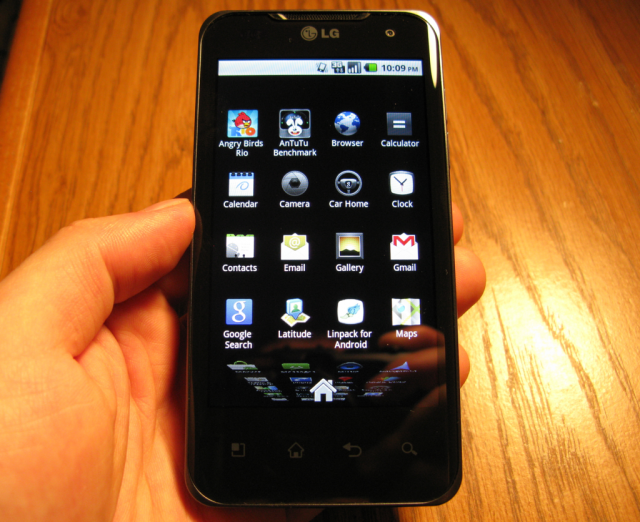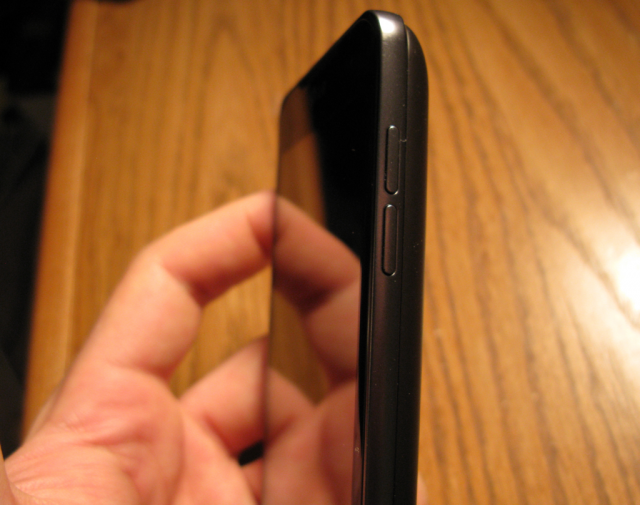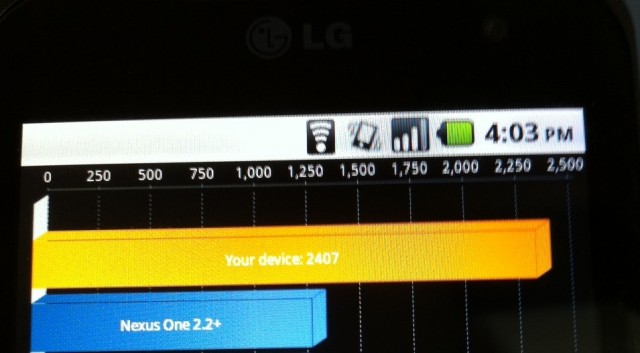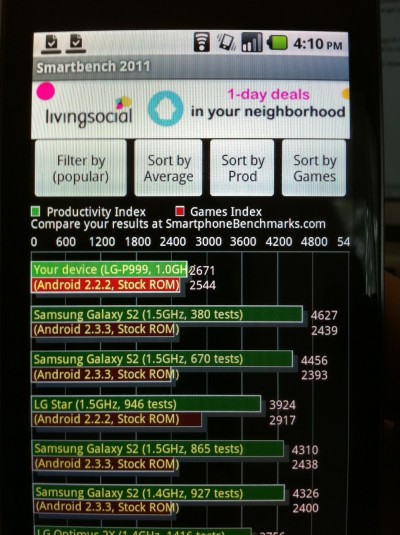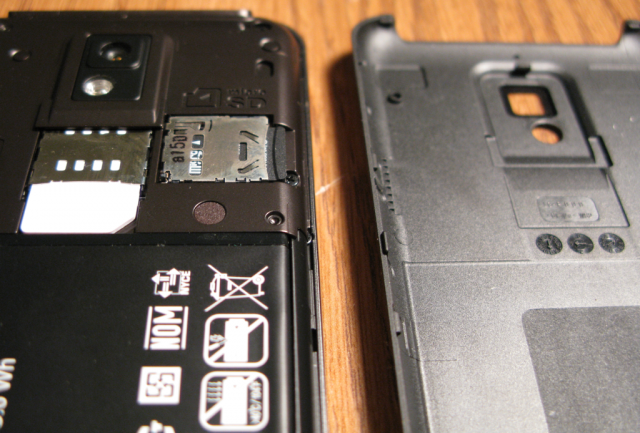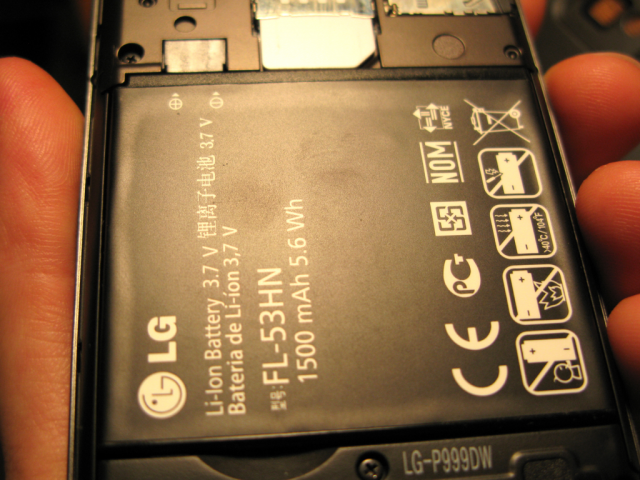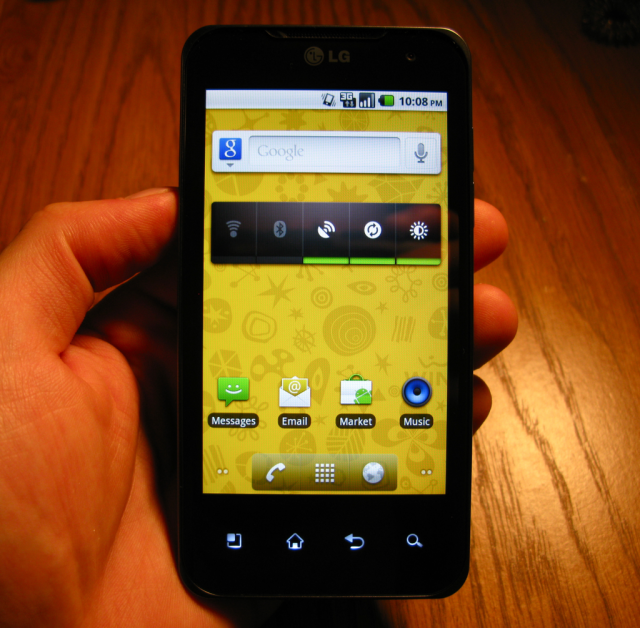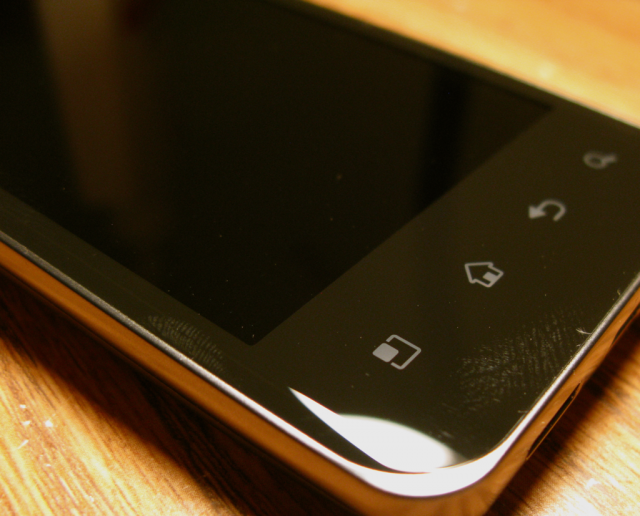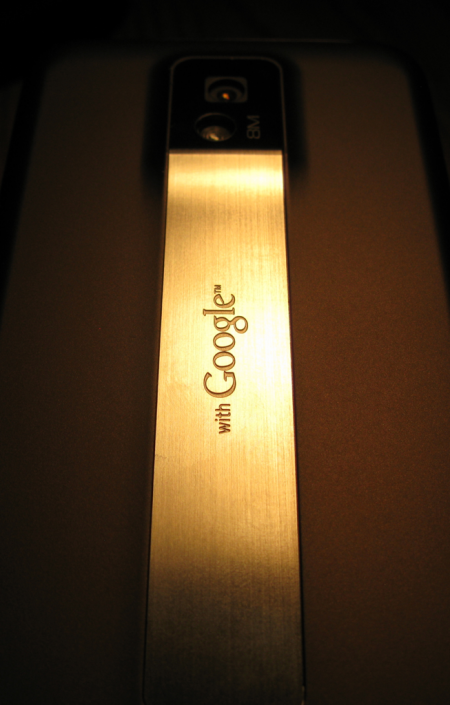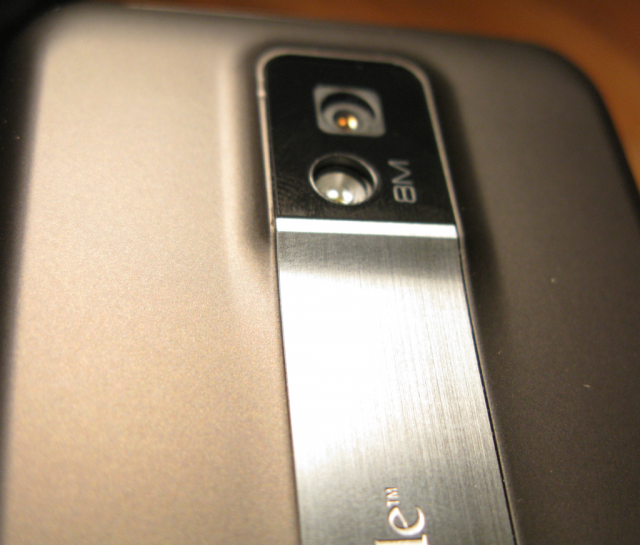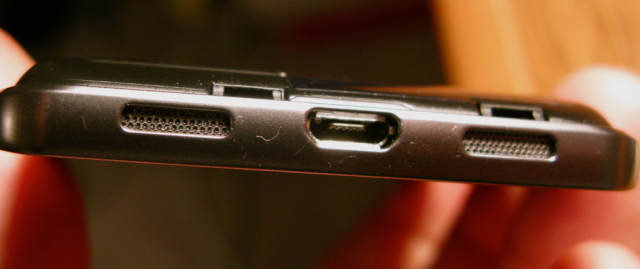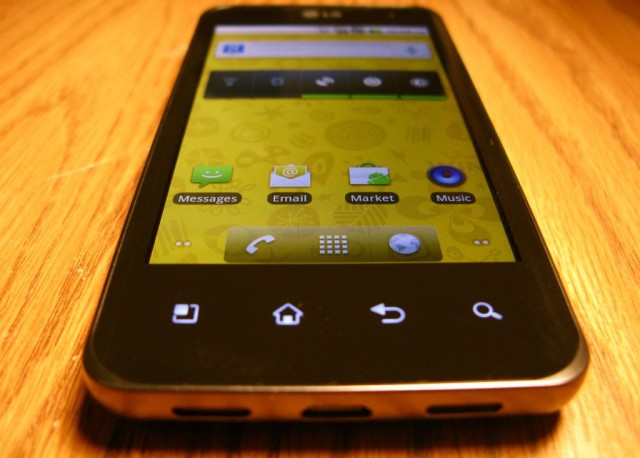
LG has had a rough year. Along with slashing their outlook for 2011 shipments, there have been quality control problems with many of their products, including the Optimus 2X in Europe and the United States (which on T-Mobilet is known as the G2x). But there have also been some bright spots, like the 2X being crowned the world’s first dual-core device. The company has also done a lot of work to rebrand itself for the premium device market, of which the Optimus 2X is an integral part. So knowing that Wind’s Optimus 2X is the G2x rebranded for Canadian climates, have they been able to work out the kinks and keep LG riding high? Read on to find out.
Specs
– 1Ghz dual-core Tegra2 SoC
– 512MB RAM / 8GB internal storage
– 4″ 800×480 pixel IPS LCD display w/ Gorilla Glass
– Android 2.2.2 Froyo
– 8MP back camera / 1.3MP front camera
– 1080p HD video capture
– WiFi b/g/n, Bluetooth 2.1 w/ A2DP
– DLNA support, mini HDMI-out (cable not included)
– HSDPA 21Mbps / HSUPA 5.76Mbps
– 124.5 x 63.5 x 10.2 mm
– 142g
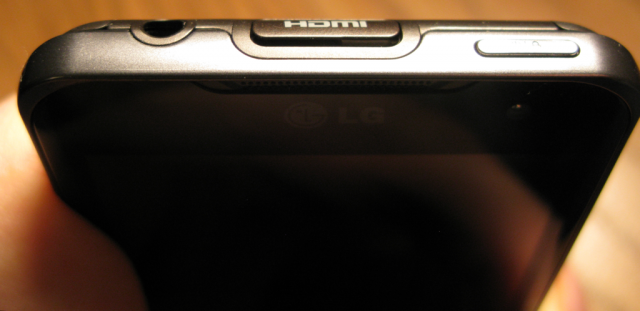
The Phone
The LG Optimus 2X is many things, and we’re happy to say that being attractive is one of them. Along with some powerful insides, the device shares a lot of design qualities with the LG Optimus Pad, which Rogers released in May. In fact, putting the two side by side you’d argue that LG was finally emerging as a design player in the market. At 142g, it errs on the side of hefty, but its solidity is what truly struck us when first picking it up. Made of brushed matte plastic with a solid aluminum stripe down the centre of the battery cover, it exudes the premium branding LG was aiming for.
The Optimus 2X takes a number of design cues from the iPhone 4, but not enough to be mistaken for the eponymous device. The left side is clean, which is unusual for an Android phone, while on the right side there are two separated volume buttons, elongated into slits. The bottom of the device houses the microUSB port, buffeted on either side by two grills: a right speaker and a left microphone. The top of the device is quite busy, with a 3.5mm headphone jack on the left, a mini HDMI-out connector in the middle and power button on the right. Just underneath the power button, parallel to the LG logo on the face of the Optimus 2X is the 1.3MP front-facing camera. Around back, centred, is the 8MP camera with LED flash which resides just above the attractive aforementioned “racing stripe” adorned “with Google.”
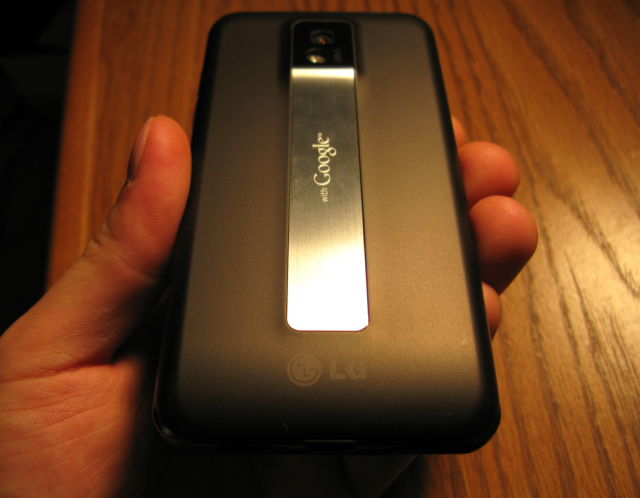
The design is tri-tone: the black face bordered by a chrome bezel perimeter giving way to a charcoal grey battery cover. It’s classy and functional, and arguably one of the tallest 4” devices we’ve ever used. The front of the device incorporates four capacitive touch buttons – menu, home, back, search – but there is a lot of space below them that some have described as wasted space. We feel this design choice probably allowed for a larger battery, but even if it didn’t, it’s bold, attractive and usable.
The Display
Short of a Super AMOLED screen, this is likely the best smartphone screen you’ll find on an Android phone today. At four inches, it is just the right pixel density for the 800×480 resolution, and because it uses IPS technology (again, like the iPhone 4) the colours are extraordinary and accurate, blacks are deep, and viewing angles excellent.
The screen is covered by a piece of slightly convex Gorilla Glass that bulges slightly outward, magnifying the screen contents just enough to appear to pop. While this does nothing to increase the size of the displayed objects, readability is thoroughly enhanced. There is still no debate, unlike Samsung’s Super AMOLED display, that you’re looking at a plain LCD display, but this is one of the better ones out there.
The display does betray a few signs of mediocrity; there is some light bleeding in the corners when the screen is on. Most noticeable on a black background, this exposes an inconsistent colour gradient in some places. Not noticeable unless sought out, the issue did end up being a problem when using the Kobo eReader app in nighttime mode, as we are wont to do occasionally. Nevertheless, the problem seems to be endemic, and one of the causes of a drastic production cut at T-Mobile; LG apparently wanted to look into the problem before too many people had the device in their hands. On our review unit, we noticed there was slight leakage in all four corners, with one leaking significantly more than the others.
Thankfully, WIND does have a pretty generous return policy, as per their FAQ: “We understand things don’t always go the way you expected. If you find you and your new WIND product(s) aren’t a perfect match within 14 days after you purchase the device, head back to the WIND location you purchased it from for a refund or exchange. So long as you’ve used less than 30 minutes of airtime, and the products are in “like new” condition, we’ll work it out.”
Other than the minor light bleeding (or perhaps because of it) there are only good things to say about the screen. Brightness levels are excellent, easily rivalling its modern Android peers, and while colours and viewing angles do not match the much more expensive Retina Display of the iPhone 4, which also uses In-Plane Switching technology, it certainly competes.
Performance
The Optimus 2X incorporates nVidia’s Tegra2 SoC, which, as we’ve outlined in our Motorola Atrix review, has some serious power. Arguably a better performer, the LG never seemed to have issues with anything we threw at it, despite half the amount of RAM as the Atrix. This is perhaps because it runs a perfectly stock — and therefore less bogged down by background services — version of Android, but LG has definitely done some optimizations of its own.
First, let’s get it out of the way: the Optimus 2X runs Froyo – Android 2.2.2 – so despite incorporating many of the recent performance enhancements and features Google debuted in May 2010, its cream-coloured styling has not aged well at all. Froyo brought with it many of the features we take for granted in Android’s current state: Flash capabilities; WiFi hotspot support; a just-in-time compiler for increased app performance; native cloud-to-device APIs, among others. And some customers will certainly see past the lack of shine to the austere usability of the interface.
Thanks to the dual-core processor, this baby flies. Through menus, through apps, games and entertainment, there is very little that brought the Optimus 2X to its knees. In fact, as with most high-end Android devices, the only things that did cause it to stumble were Flash videos played inside the browser. Some played without issue while others caused the browser to Force Close. Though there was little predictability to the instability, it happened most often with 720p videos, despite many running beautifully. Browsing in general, however, is a fantastic and smooth experience and rivals any modern Android device in that respect.
Because the Optimus 2X comes with a very capable graphics processor alongside its two CPUs, nVidia thought it would be a good idea to showcase some games that are optimized for the chipset. Tegra Zone is a place to try and buy games specially made for its devices, and while many would argue this furthers fragmentation of the Android hardware and software market, no one is complaining about the games themselves.
We found ourselves playing Pinball HD, a beautiful arcade game with three high-definition stages and lots of replay value. Even if you don’t like pinball, it’s one of those games to show off your new phone’s graphics capabilities to your envious friends.
The Optimus 2X did pretty well in synthetic benchmarks, too. The Quadrant benchmark suite averaged a score of 2407, slightly above other Tegra2 devices (though the Atrix renders at a higher resolution, biasing the results of the 2X somewhat). Linkpack scores were a respectable 42MFLOPS on the multi-core test, and SmartBench 2011, our new go-to suite, earned a decent 2671/2544 on Productivity and Games respectively. Compare that to the average Samsung Galaxy S II clocked at stock 1.2Ghz (3861/2244) and you’ve got yourself quite the achiever, especially when it comes to games.
Camera
The 8MP camera on the Optimus 2X is good for a couple of important reasons. One, it is lightning fast; two, the software is customized by LG, and it’s awesome.
One of the few places where LG dipped their toes into changing the core Android apps, the camera app has one-touch access to all important toggles and settings in an interface that, unlike the stock app, is not an eyesore. Incorporating features such as continuous shot and a very cool panorama mode, shooting with the default settings usually turns out sharp, accurate tones and a good amount of detail. Even in darker locations the Optimus 2X performs quite well, though photos have a slight green tinge to them.
In all scenarios there is more noise than we’d like to see, likely due to an overactive sharpness filter. Unlike comparable HTC devices, however, there is no option to adjust sharpness, though you can manually adjust the ISO up to 800 as well as brightness (exposure) ±2. In bright or sunny spots the auto ISO adjusted itself to 100 or 200 and noise was minimal; indoors it usually stayed at 800 resulting in some pretty grainy photos. It’s possible to focus by touching anywhere on the screen, which is appreciated.
The device also has a front-facing camera that, at 1.3MP, is significantly more usable than most VGA shooters on the market. Suitable for vanity shots and the occasional video chat, provided the Optimus 2X is upgraded to Android 2.3.4, it will work great with GTalk for video.
As with most dual-core devices on the market, the Optimus 2X can shoot video up to 1080p, and like its still shots, the results are remarkably good. Frame rates are stable at 24fps until action gets heavy, and even then artifacting is kept to a minimum. It shoots 720p at 30fps, which we proferred, as the quality was only slightly lower while the file size significantly so. Colours are strong, and though only captured in mono, sound quality is too. There was a bit more artifacting that we’d like to see at high resolutions, but that is more due to the encoding bitrate than the quality of sensor.
Connectivity and Network Performance
A few months ago, WIND began touting the clarity of voice calls going over its network by way of the HD Voice protocol that we showcased in the Nokia C5-04 review. Suffice it to say, while there have been a few devices introduced since then, including the Nexus S, to support this feature, we still couldn’t find another person using WIND and a compatible phone to test out the feature.
Call quality, even without HD Voice, is stellar over WIND’s network, provided you have a strong signal. When we didn’t, usually while indoors or hiding behind concrete pillars, calls occasionally dropped, but the occurrences were rare. Since reviewing the C5-04, the carrier has also considerably expanded its network, branching west past Oakville into Hamilton, and east deep into Oshawa. Coverage in the GTA is usually better than the equivalent phone on Mobilicity, though there are areas in the city where one is stronger than the other. Neither are ready to compete with the incumbents for national coverage yet, but in their core cities (Toronto, Ottawa, Calgary, Edmonton, Vancouver) both WIND and Mobilicity are improving.
Data speeds are also an area in which WIND has been trying to improve, and we can happily say they are better than they were six months ago but still well below the incumbents. We reached an average of 1Mbps download and 150kbps upload, despite the device supporting 21Mbps/5.76Mbps respectively. Obviously still within the realm of 3G, we are used to seeing speeds in excess of 4Mbps/2Mbps on Bell or Telus, and slightly less than that on Rogers. It was a significant issue when browsing or downloading large files, and we often regretted not having a WiFi signal around to give us a boost.
In terms of connectivity, the Optimus 2X is no slouch. HDMI-out and DLNA support bring easy movie-sharing capabilities to the device, while WiFi b/g/n and Bluetooth 2.1 with A2DP support round out the equation. DLNA options are easily configured through the Settings app.
Battery Life
In a word: meh. The 1500mAh battery provides enough juice for most peoples’ day, but it’s not enough to ensure you won’t need a charger by 6pm. We found that using it in our regular way, with a push email account, a pull email account, background Twitter updates, 10-15 photos, some texting, browsing and a couple 5-10 minute phone calls brought the device to the red zone by 4pm.
Used a little more judiciously and battery prospects increase dramatically. Rumour has it that there will be some major fixes in the Gingerbread update, as battery issues have plagued the G2x and Optimus 2X since its release earlier this year in America and Europe. Apparently LG neglected to take advantage of the power-sipping nature of the Tegra2 chip, and have promised to incorporate the tweaks in the update. The company did promise and failed to deliver Gingerbread by early June, so when WIND customers will see Android 2.3 is up in the air.
There is hope, however: see Hacking below.
Android: Naked
This is what we like to see. A holdover from the T-Mobile G2x (despite being called the Optimus 2X, the model number P999 is actually identical to its American counterpart) WIND’s version too uses a stock Android interface. While missing some of the flare that differentiates HTC, Samsung and Sony Ericsson devices, it is a welcome reprieve to use Android as it was meant to be: untainted and modest. And for your money, you’re getting no carrier or manufacturer bloatware, either.
While it maintains all of Google’s stock apps, including the rather homely-looking Dialler and Music applications out of the box the device lacks little in ability. When you first sign into the device you will be asked to log in to your Google account. If you use it for such things, your calendar and contacts, along with your pictures and email will be synced to the phone’s core apps. One of our favourite features of Android, its cloud syncing abilities, makes it incredibly easy to switch devices without losing much of your data. And since you have access to the Android marketplace, and all your previously purchased apps under the same Google account, your stuff comes with you, too.
There are certain things lacking from the experience, however: as mentioned, some of the core apps such as the dialler and music player lack polish or features, and are just plain ugly. Easily remedied by downloading third-party alternatives from the vast Android Marketplace, it is an unwelcome necessity nonetheless. A nice touch, though, is that when you hold down the app drawer icon (the little dots in the bottom middle of the home screen) for a second, a preview of each home screen pops up with the option of touching one to quickly navigate.
There are some aspects of Froyo that we’d rather put behind us. In addition to the cream-coloured stylings, the Froyo keyboard is atrocious. When you use it for the first time, appreciate that this was not one of Android’s finest inclusions and that the issue has since been rectified in Gingerbread. Luckily for us, we don’t have to wait for an OS update to upgrade our keyboard; simply search for “Gingerbread Keyboard” in the Marketplace to get cracking. Trust us, you won’t regret it.
HDMI-out is provided via a cable that is not provided, so make sure to purchase one if you want to take advantage of the 1080p mirroring functionality. The Optimus 2X can play back DivX, H.264 and most high-bitrate videos natively, but certain files, including some xVid .AVI files that play without issue on our computer refused to cooperate on the included Video Player. Luckily there are myriad alternatives in the Marketplace, including our favourite VPlayer, which, for $4.99, plays practically everything. You can set HDMI resolution in the Settings, though it will try to detect it automatically based on your television’s resolution.
Happily, the Optimus 2X ships with 8GB of internal storage, of which 5.4GB is available for general file storage and 1.35GB for application storage. It also has an unused microSD slot with support for up to 32GB cards.
Hackability
The LG Optimus 2X, which as stated is more like a G2x, is a hacker’s dream phone. Since the bootloader comes unlocked out of the box, it is very easy to install a custom recovery ROM on the device, which allows for such naughty behaviour as installing CyanogenMOD 7, our favourite custom Android ROM (which happens to be running the latest version 2.3.4). CM7 increases battery life significantly by completely rewriting LG’s kernel, and includes the latest version of Google Talk which support video via the front-facing camera. Read more about it at CyanogenMOD.com, or head to the G2x forum at XDA-Developers.com to get your hacking career started. We’re hooked.
If flashing custom ROMs isn’t your thing, perhaps custom kernels are. Since its release the Optimus 2X has proven quite the overclocking scholar, beating out even the Samsung Galaxy S II in benchmarks when clocked high enough. Out of the box the O2X runs at 1Ghz on both cores, but can safely be boosted 50% to 1.5Ghz for a huge speed increase (at the expense of battery life, and perhaps the life of your device, so be warned).
Conclusions
At $445 outright (and $295 on the WIND Tab), the Optimus 2X is one of the cheapest high-end Android devices we’ve used. It doesn’t outshine Samsung’s or HTC’s flagships, but instead floats just under the radar, competing with even the Galaxy S II despite its lower entry point.
It’s got a great screen, excellent performance and a fantastic development community. It’s also paired up with some of the lowest price plans in Canada: for $55/month, you basically get unlimited everything (see WIND’s price plans) including data (subject to fair use policy) when in a Home Zone. It’s not for everyone: the service area is not national, roaming on Rogers’ network when outside the WIND Home perimeter, and at 25c/min for voice and $1/MB it can add up. But WIND also has the same rates for US roaming which is significantly cheaper than the incumbents’ deals; if you’re a frequent traveler to the States, and tend to stay in your WIND Home area when in Canada, these are the best rate plans in the country.
It’s also WIND Mobile’s best phone, and if you are set on the carrier, or already a customer and looking to upgrade, the LG Optimus 2X is your best bet.
Rating: 8/10
Pros:
– Excellent performance
– Good build quality and design
– Beautiful IPS display (with caveats)
– Life-like camera shots and smooth 1080p video
– Running stock Android with no bloatware
– Excellent price for a dual-core smartphone
– Good voice quality
– Fanstastic hackability and development community
Cons:
– All-plastic design sometimes creaks
– Egregious battery life
– Running year-old Android code
– Quality control issues with screen backlight bleeding
MobileSyrup may earn a commission from purchases made via our links, which helps fund the journalism we provide free on our website. These links do not influence our editorial content. Support us here.

